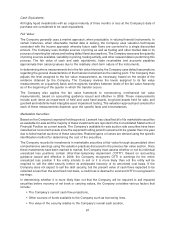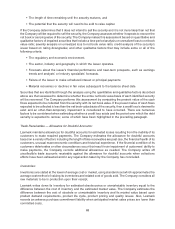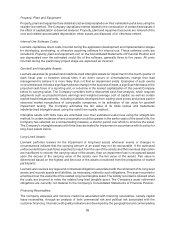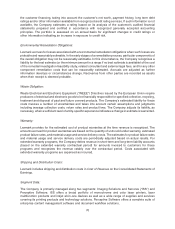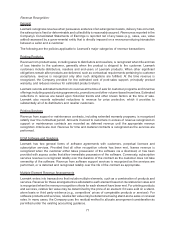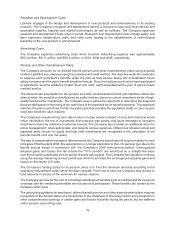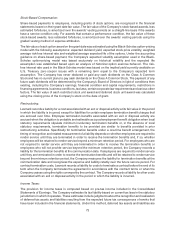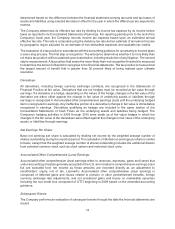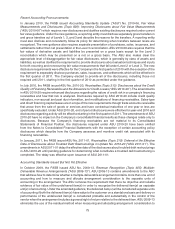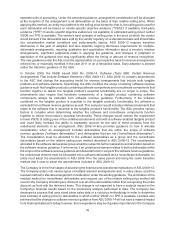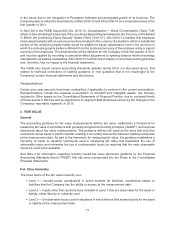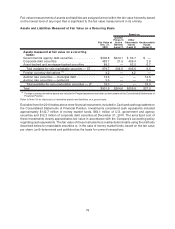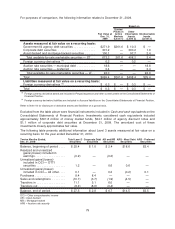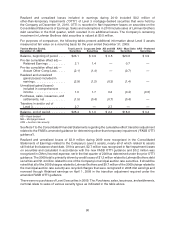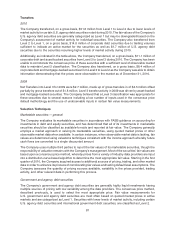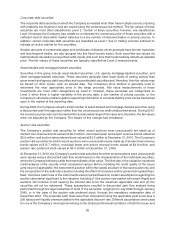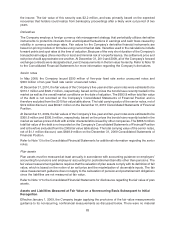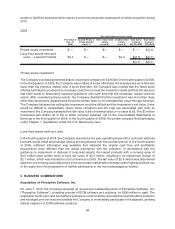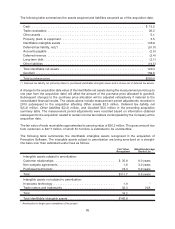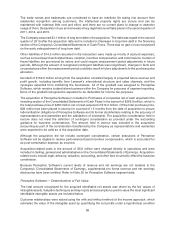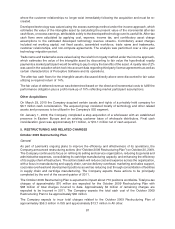Lexmark 2010 Annual Report Download - page 83
Download and view the complete annual report
Please find page 83 of the 2010 Lexmark annual report below. You can navigate through the pages in the report by either clicking on the pages listed below, or by using the keyword search tool below to find specific information within the annual report.in the future due to the integration of Perceptive Software and anticipated growth of its business. The
Company plans to adopt the amendments of ASU 2009-13 and ASU 2009-14 on a prospective basis in the
first quarter of 2011.
In April 2010, the FASB issued ASU No. 2010-13, Compensation — Stock Compensation (Topic 718):
Effect of Denominating the Exercise Price of a Share-Based Payment Award in the Currency of the Market
in Which the Underlying Equity Security Trades (“ASU 2010-13”). ASU 2010-13 clarifies that employee
share-based awards with an exercise price denominated in the currency of a market in which a substantial
portion of the underlying equity trades would be eligible for equity classification even if the currency in
which the underlying equity trades is different from the functional currency of the employer entity or payroll
currency of the employee. The amendments will be effective for the Company in the first quarter of 2011
and must be applied by recording a cumulative-effect adjustment to opening balance retained earnings
calculated for all awards outstanding. ASU 2010-13 confirms the Company’s current accounting practices
and, therefore, has no impact to the financial statements.
The FASB also issued several accounting standards updates during 2010, not discussed above, that
related to technical corrections of existing guidance or new guidance that is not meaningful to the
Company’s current financial statements and disclosures.
Reclassifications:
Certain prior year amounts have been reclassified, if applicable, to conform to the current presentation.
Reclassifications include the separate presentation of Goodwill and Intangible assets, net, formerly
included in Other assets on the Consolidated Statements of Financial Position, due to increased levels
of these assets in 2010 as well as adjustments to segment data disclosures driven by the changes in the
Company’s reportable segments in 2010.
3. FAIR VALUE
General
The accounting guidance for fair value measurements defines fair value, establishes a framework for
measuring fair value in accordance with generally accepted accounting principles (“GAAP”), and requires
disclosures about fair value measurements. The guidance defines fair value as the price that would be
received to sell an asset or paid to transfer a liability in an orderly transaction between market participants
at the measurement date. As part of the framework for measuring fair value, the guidance establishes a
hierarchy of inputs to valuation techniques used in measuring fair value that maximizes the use of
observable inputs and minimizes the use of unobservable inputs by requiring that the most observable
inputs be used when available.
See Note 2 for information regarding recently issued fair value disclosure guidance by the Financial
Accounting Standards Board (“FASB”) that has been incorporated into the Notes to the Consolidated
Financial Statements.
Fair Value Hierarchy
The three levels of the fair value hierarchy are:
• Level 1 — Quoted prices (unadjusted) in active markets for identical, unrestricted assets or
liabilities that the Company has the ability to access at the measurement date;
• Level 2 — Inputs other than quoted prices included in Level 1 that are observable for the asset or
liability, either directly or indirectly; and
• Level 3 — Unobservable inputs used in valuations in which there is little market activity for the asset
or liability at the measurement date.
77


